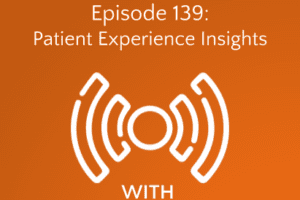The following is a guest article by Oakkar Oakkar, Co-Founder and CEO at Keona Health
Imagine a tool that puts your health information right at your fingertips. That’s what patient portals promise – a simple, digital way to access medical records, book appointments, and chat with doctors. They’re designed to make life easier for patients, and studies show they can even help reduce hospital visits, like in 2020 when heart failure patients using these portals saw fewer hospital readmissions.
But there’s a catch. Despite their benefits, many patients aren’t using these portals. It’s not just a matter of preference; it’s a complex issue. In 2022, a study highlighted a stark difference: only 60% of Black and 57% of Hispanic patients used these portals, compared to 70% of white patients. This gap points to a deeper issue of accessibility and perhaps, trust in the system.
Another study in 2018 suggested something more personal. Some patients avoid portals because they fear losing the human touch in their healthcare. They value face-to-face conversations with their doctors and worry that going digital might take that away.
Then there’s the worry about privacy. In an age where data breaches are common, some patients are hesitant to put their health information online. They’re concerned about who might see their data and how it could be used.
So, while patient portals have the potential to revolutionize healthcare, they’re facing real challenges. It’s not just about making a tool available; it’s about understanding the needs and concerns of the people who are supposed to use it.
I found the conclusions of an article in Health Affairs very telling: “Those who had only a high school education, did not have a regular provider, and had Medicaid insurance were much less likely to use a portal.”
In short, even if you have a state-of-the-art patient portal, it doesn’t guarantee patients will use it. For any healthcare provider who wants to help patients start reaping the benefits of regular portal use, I’ve gone through the research and found a few factors that can help patients make the transition and begin using portals.
Educate Yourself
Before you can educate your patients, it’s important that you educate yourself. I’d suggest you deeply familiarize yourself with the patient portal you have at your disposal. What do you like about it? What are the limitations?
Develop a thorough understanding of all the features that your patient portal offers, including appointment scheduling, access to medical records, prescription refills, direct messaging with providers, and any educational resources. You should also keep abreast of any updates or new features added to the portal. This ensures that you can accurately inform and guide patients about the latest functionalities.
You should also get skilled at explaining the benefits of the portal in a way that is clear and relatable to patients. Try different techniques, especially for those who are less comfortable with technology. Do brochures work? Does a simple conversation with a feature overview communicate the benefits? Maybe highlight online appointment scheduling and virtual consultations to appeal to patients with busy lifestyles, while also talking up data security to soothe patients concerned about their privacy. Remember, the better you understand the portal, the better you’ll be able to sell patients on its use.
Talk to Patients
Not only should you be familiar with the portal itself, but you should also become familiar with what might be stopping your patients from using it. In many of the studies I mentioned above, the main reason patients didn’t use the portal was because they didn’t know about it. When healthcare providers bridged that gap by encouraging their patients to use portals, the patients did so more often.
Talk to your patients to see what’s holding them back from using patient portals. Is it from a lack of awareness? Is it a privacy or data concern? Are patients afraid that you want to replace in-person visits with online communication only? Are they not technologically literate enough to understand how to use the portal? The better you understand their hesitation, the better able you’ll be to help them use this powerful tool.
More than just mentioning the portal to individual patients, you should also talk to your administration staff about getting the word out at your facility. This could be as simple as constructing a brochure stand in your waiting room, adding a poster to consultation rooms, or sending out an email and a physical letter to patients with simple instructions on how to join and how they can benefit.
Build Community Digital Literacy
With patients who feel overwhelmed by or uncomfortable with technology, one option is to invest in digital literacy education programs or workshops, offering simple tutorials to enhance your patients’ comfort and confidence in using technology, and by extension your portal.
For best results, I recommend doing both online and in-person workshops. Online workshops are suitable for patients who are less mobile, or who are immuno-compromised and want to limit their exposure. In-person workshops cater to patients who aren’t digital natives, and who might need more hands-on help to access the portal.
It’s a good idea to offer guidance on how patients can incorporate portal activities into their daily lives, emphasizing the convenience of accessing health information on the go. That way you’re underlining the benefits while teaching them how to access those benefits at the same time.
Prioritize Simple, Inclusive Design
There are a few simple areas you can focus on to improve accessibility to your patient portal.
One important improvement to push for is language accessibility. Design the patient portal to support multiple languages, especially those prevalent in the local community. This can significantly increase accessibility for non-English speaking patients.
I’d also recommend that, given the widespread use of smartphones, you push for a patient portal that is fully functional and easy to navigate on mobile devices. This can increase accessibility for patients who may not have regular access to a desktop or laptop computer. It can also increase the adoption among patients with busy schedules and time constraints that deter them from using the portal’s features.
Finally – and this goes back to the “talk to your patients” advice – I’d also recommend you regularly collect and incorporate patient feedback to improve the portal’s design and functionality. This could include surveys, focus groups, or a feedback option within the portal itself.
Final Thoughts
I know how frustrating it can be when technological hiccups prevent you from providing the best possible care. However, with patient portals, the obstacles are often easier to overcome than you think.
Understand the portal’s selling points and likely challenges to adoption. Talk to your patients – understand their hesitations and worries. And with that knowledge, advocate for features that make the patient portal more inclusive and functional for your patient community. These relatively simple steps can make a huge impact in helping your patients take charge of their healthcare with patient portals.
 About Oakkar Oakkar
About Oakkar Oakkar
Oakkar Oakkar is the CEO and co-founder of Keona Health, which creates a seamless communication platform connecting patients and their care providers in the most personalized and integrated way.













